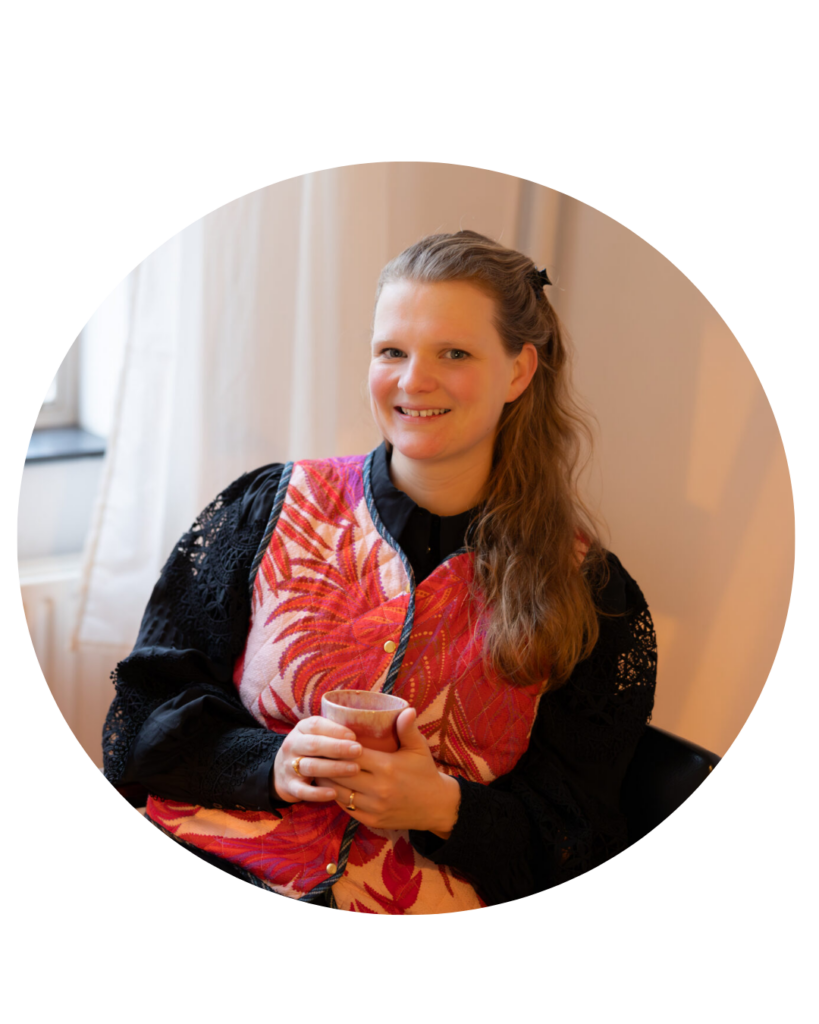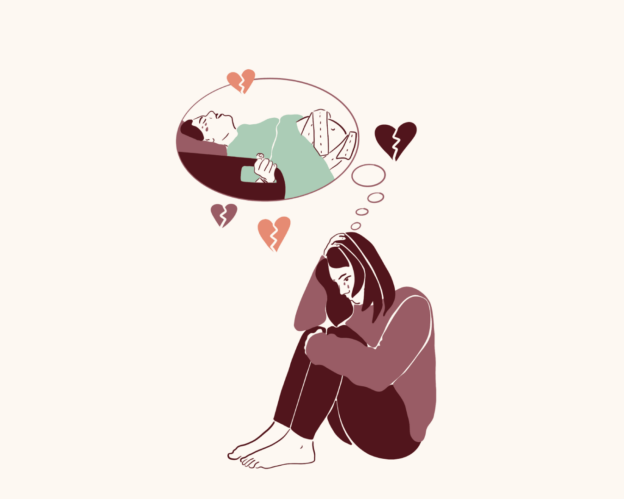
Geschreven door Karianne van Vliet, GZ-psycholoog
Gepubliceerd: november 2022
Laatste update: januari 2024
Na het doormaken van een (heftige) bevalling, kan het zijn dat er een bevallingstrauma ontstaat. In dit artikel zullen we bespreken wat een bevallingstrauma is, hoe het kan ontstaan, welke klachten daarbij komen kijken en wat het verschil is met een bevallingsgerelateerde PTSS. Vervolgens staan we stil bij verschillende behandelmethodes en preventie; wat je zelf kan doen als je deze klachten hebt, wat je kan doen als zorgverlener bij een cliënt met deze klachten?
| Mijn naam is Karianne van Vliet. Ik ben werkzaam in mijn vrijgevestigde praktijk ‘Nieuw Leven’ als GZ-psycholoog. Binnen mijn praktijk behandel ik voornamelijk cliënten met psychische klachten die ouderschap/zwangerschap gerelateerd zijn, waaronder dus ook zeer regelmatig een trauma of PTSS als gevolg van een bevalling. |
Abdollahpour S, Khosravi A, Bolbolhaghighi N. The effect of the magical hour on post-traumatic stress disorder (PTSD) in traumatic childbirth: a clinical trial. J Reprod Infant Psychol. 2016;34(4):403–12.
American Psychiatric Association (2013). DSM-5. Handboek voor classificatie van psychische stoornissen. Amsterdam: Boom.
Arch, J. J., Dimidjian, S., & Chessick, C. (2012). Are exposure-based cognitive behavioral therapies safe during pregnancy?. Archives of women’s mental health, 15(6), 445-457.
Aydın, R., & Aktaş, S. (2021). Midwives’ experiences of traumatic births: A systematic review and meta-synthesis. European Journal of Midwifery, 5.
Ayers, S., Eagle, A., & Waring, H. (2006). The effects of childbirth related post-traumatic stress disorder on women and their relationships: A qualitative study. Psychology, Health & Medicine, 11(4), 389–398.
Ayers, S., Wright, D. B., and Wells, N. (2007). Symptoms of post-traumatic stress disorder in couples after birth: association with the couple’s relationship and parent-baby bond. J. Reprod. Infant Psychol. 25, 40–50.
Ayers, S., Bond, R., Bertullies, S., & Wijma, K. (2016). The aetiology of post-traumatic stress following childbirth: a meta-analysis and theoretical framework. Psychological medicine, 46(6), 1121-1134.
Baas, M. A. M., Stramrood, C. A. I., Dijksman, L. M., de Jongh, A., & Van Pampus, M. G. (2017). The OptiMUM-study: EMDR therapy in pregnant women with posttraumatic stress disorder after previous childbirth and pregnant women with fear of childbirth: design of a multicentre randomized controlled trial. European journal of psychotraumatology, 8(1),
Beck CT, Watson S. Impact of birth trauma on breast-feeding: a tale of two pathways. Nurs Res. 2008 Jul-Aug;57(4):228-36. doi: 10.1097/01.NNR.0000313494.87282.90. PMID: 18641491.
Beck, C. T., Watson, J., and Driscoll, S. (2013). “Fathers and traumatic childbirth,” in Traumatic Childbirth, eds C. T. Beck, J. W. Driscoll, and S. Watson (New York, NY: Routledge). Bertakis, K. D., & Azari, R. (2011). Patien-centered care is associated with decreased health care utilization. The journal of the American Board of Familiy Medicine, 24(3), 229-239.
Bisson, J. I., Berliner, L., Cloitre, M., Forbes, D., Jensen, T. K., Lewis, C., … & Shapiro, F. (2019). The international society for traumatic stress studies new guidelines for the prevention and treatment of posttraumatic stress disorder: Methodology and development process. Journal of Traumatic Stress, 32(4), 475-483.
Bohren M, Hofmeyr G, Sakala C, Fukuzawa R, Cuthbert A. Continuous Support for Women During Childbirth. Cochrane Database Syst Rev. 2017;(7).
Bohren, M. A., Berger, B. O., Munthe-Kaas, H., and Tunçalp, Ö (2019). Perceptions and experiences of labour companionship: a qualitative evidence synthesis.
Bosquet ENlow, M., Kitts, R.L., Blood, E. , Bizarro, A., Hofmeister, M., Wright, R.J., 2011. Martneral posttraumtic stress symptoms and infant emotional reactivity and emotion regulation. Infan Behav Dev 34, 487-503.
Boyd, J. E., Lanius, R. A., & McKinnon, M. C. (2018). Mindfulness-based treatments for posttraumatic stress disorder: a review of the treatment literature and neurobiological evidence. Journal of Psychiatry and Neuroscience, 43(1), 7-25.
Bradley, R., Slade, P., and Leviston, A. (2008). Low rates of PTSD in men attending childbirth: A preliminary study. Br. J. Clin. Psychol. 47(Pt 3), 295–302.
Bristow, F. (2016). Paternal Posttraumatic Stress Following Childbirth: Towards a Theoretical Model (Doctoral dissertation, Royal Holloway, University of London).
Care Quality Commission (2020). 2019 Survey of Women’s Experiences of Maternity Care: Statistical Release.
Chen, Y. R., Hung, K. W., Tsai, J. C., Chu, H., Chung, M. H., Chen, S. R., … & Chou, K. R. (2014). Efficacy of eye-movement desensitization and reprocessing for patients with posttraumatic-stress disorder: A meta-analysis of randomized controlled trials. PloS one, 9(8), e103676.
Chiorino, V., Roveraro, S., Cattaneo, M. C., Salerno, R., Macchi, E. A., Bertolucci, G. G., … & Fernandez, I. (2016). A model of clinical intervention in the maternity ward: The breastfeeding and bonding EMDR protocol. Journal of EMDR Practice and Research, 10(4), 275-292.
Christoffersen L, Teigen J, Rønningstad C. Followingup midwives after adverse incidents: How front-line management practices help second victims. Midwifery. 2020;85
Church, D., & Feinstein, D. (2017). The manual stimulation of acupuncture points in the treatment of post-traumatic stress disorder: A review of clinical emotional freedom techniques. Medical acupuncture, 29(4), 194-205.
Decety, J., Smith, K. E., Norman, G. J., & Halpern, J. (2014). A social neuroscience perspective on clinical empathy. World psychiatry, 13(3), 233-237.
De Jongh, A., Amann, B. L., Hofmann, A., Farrell, D., & Lee, C. W. (2019). The status of EMDR therapy in the treatment of posttraumatic stress disorder 30 years after its introduction. Journal of EMDR Practice and Research, 13(4), 261–269.
Di Blasio P, Camisasca E, Caravita SC, Ionio C, Milani L, Valtolina GG. The effects of expressive writing on Postpartum depression and Posttraumatic stress symptoms. Psychol Rep. (2015) 117:856–82. doi: 10.2466/02.13.PR0.117c29z3
Elmir R, Pangas J, Dahlen H, Schmied V. A metaethnographic synthesis of midwives’ and nurses’ experiences of adverse labour and birth events. J Clin Nurs. 2017;26(23-24)
Gamble J, Creedy D, Moyle W, Webster J, McAllister M, Dickson P. Effectiveness of a counseling intervention after a traumatic childbirth: A randomized controlled trial. Birth. 2005;32(1):11–9.
Garthus-Niegel, S., Ayers, S., von Soest, T., Torgersen, L., Eberhard-Gran, M., 2015. Maintaing factors of posttraumtic stress symtpoms following childbirth: A population-based, two-year follow-up study. J Affect Disord 172, 146-152.
Goldbort J, Knepp A, Mueller C, Pyron M. Intrapartum Nurses’ Lived Experience in a Traumatic Birthing Process. MCN Am J Matern Child Nurs. 2011;36(6):373–380
Grekin, R., & O’Hara, M.W. (2014). Prevalence and risk factors of postpartum posttraumatic stress disorder: A meta-analysis. Clinical Psychology Review, 34, 389-401.
Hendrix, Y. M., van Dongen, K. S., de Jongh, A., & van Pampus, M. G. (2021). Postpartum Early EMDR therapy Intervention (PERCEIVE) study for women after a traumatic birth experience: study protocol for a randomized controlled trial. Trials, 22(1), 1-11.
Hernández-Martínez, A., Rodríguez-Almagro, J., Molina-Alarcón, M., Infante-Torres, N., Rubio-Álvarez, A., & Martínez-Galiano, J. M. (2020). Perinatal factors related to post-traumatic stress disorder symptoms 1–5 years following birth. Women and Birth, 33(2), e129-e135.
Hinton, L., Locock, L., and Knight, M. (2014). Partner experiences of “near-miss” events in pregnancy and childbirth in the UK: a qualitative study.
Ho, M. S. K., & Lee, C. W. (2012). Cognitive behaviour therapy versus eye movement desensitization and reprocessing for post-traumatic disorder–is it all in the homework then? Revue Européenne De Psychologie Appliquée, 62(4), 253–260.
Hollander MH, van Hastenberg E, van Dillen J, van Pampus MG, de Miranda E, Stramrood CAI. Preventing traumatic childbirth experiences: 2192 women’s perceptions and views. Arch Womens Ment Health. 2017;Aug;20(4):515–23.
Horsch A, Tolsa J-F, Gilbert L, du Chene LJ, Muller-Nix C, Graz MB. Improving maternal mental health following preterm birth using an expressive writing intervention: a randomized controlled trial. Child Psychiatry Hum Dev. (2016) 47:80–791. doi: 10.1007/s10578-015-0611-6.
Hughes P, Turton P, Hopper E, Evans CDH. Assessment of guidelines for good practice in psychosocial care of mothers after stillbirth. Lancet. 2002;360(9327):114–8.
Jotzo M, Poets CF. Helping parents cope with the trauma of premature birth: an evaluation of a trauma-preventive psychological intervention. Pediatrics. 2005/04/05. 2005;115(4):915–9.
Kershaw K, Jolly J, Bhabra K, Ford J. Randomised controlled trial of community debriefing following operative delivery. Br J Obstet Gynaecol. 2005;112(11):1504–9.
Kira, I. A., Lewandowski, L., Chiodo, L., & Laddis, A. (2016). Is complicated birth one of the early childhood traumas? A framework for Birthing Trauma, its Impacts, and proliferation. Psychology, 7(03), 426.
Kranenburg, L. W., Bijma, H. H., Eggink, A. J., Knijff, E. M., & Lambregtse-van den Berg, M. P. (2021). Implementing an Eye Movement and Desensitization Reprocessing Treatment-Program for Women With Posttraumatic Stress Disorder After Childbirth. Frontiers in Psychology, 12.
Krasner, M. S., Epstein, R. M., Becman, H. Suchman, A. L., Chapman, B., Mooney, C. J., & Quill, T. E. (2009). Association of an educational program in mindful communication with burnout, empathy and attitudes among primary care physcicians. Jama, 302(12), 1284-1293.
Leinweber, J., Creedy, D. K., Rowe, H., & Gamble, J. (2017). Responses to birth trauma and prevalence of posttraumatic stress among Australian midwives. Women and birth, 30(1), 40-45.
Molloy, E., Biggerstaff, D. L., & Sidebotham, P. (2021). A phenomenological exploration of parenting after birth trauma: Mothers perceptions of the first year. Women and Birth, 34(3), 278-287.
Morina, N., Wicherts, J.M., Lobbrecht, J., Priebe, S., 2014. Remission from post-traumatic stress disorder in adults: A systemic review and meta-analysis of long term outcome studies. Clin. Psychol. Rev. 34, 249-255.
Navidian A, Saravani Z, Shakiba M. Impact of Psychological Grief Counseling on the Severity of Post-Traumatic Stress Symptoms in Mothers after Stillbirths. Issues Ment Health Nurs. England: Taylor & Francis; augustus 2017;38(8):650–4.
Nicholls, K., and Ayers, S. (2007). Childbirth-related post-traumatic stress disorder in couples: a qualitative study.
Nieminen, K., Malmquist, A., Wijma, B., Ryding, E. L., Andersson, G., & Wijma, K. (2015). Nulliparous pregnant women’s narratives of imminent childbirth before and after internet‐based cognitive behavioural therapy for severe fear of childbirth: a qualitative study. BJOG: An International Journal of Obstetrics & Gynaecology, 122(9), 1259-1265.
Nijdam, M. J., Gersons, B. P. R., Reitsma, J. B., de Jongh, A., & Olff, M. (2012). Brief eclectic psychotherapy v. eye movement desensitisation and reprocessing therapy for post-traumatic stress disorder: Randomised controlled trial. British Journal of Psychiatry, 200(3), 224–231.
Ogden, P.K. (2010). Modulation, mindfulness and movement in the treatment of trauma-related depression. In M. Kerman (red.) Clinical pearls of wisdom: Twenty-one leading therapists offer their key insights (pp. 1-13).
New York: Norton & Company Parfitt, Y., Pike, A., and Ayers, S. (2014). Infant developmental outcomes: a family systems perspective. Infant Child Dev. 23, 353–373.
Ryding EL, Wijma K, Wijma B. Postpartum Counselling After an Emergency Cesarean. Clin Psychol Psychother. 1998;5:231–7.
Sandström, M., Wiberg, B., Wikman, M., Willman, A. K., & Högberg, U. (2008). A pilot study of eye movement desensitisation and reprocessing treatment (EMDR) for post-traumatic stress after childbirth. Midwifery, 24(1), 62–73.
Scheffers, M., Nissen, I., Verveld, S., van Berkel, K., Hatzmann, J. & van Busschback, J. (2016). Beweging in Trauma. (PMT opleiding Windesheim). 16-17.
Shaw RJ, St John N, Lilo E, Jo B, Benitz W, Stevenson DK, e.a. Prevention of traumatic stress in mothers of preterms: 6-month outcomes. Pediatrics. 2014;134(2):e481–8.
Sheen, K., Spiby, H., & Slade, P. (2015). Exposure to traumatic perinatal experiences and posttraumatic stress symptoms in midwives: prevalence and association with burnout. International journal of nursing studies, 52(2), 578-587.
Siegel, D. (1999). The developing mind. New York: Guilford. Skari, H., Skreden, M., Malt, U. F., Dalholt, M., Ostensen, A. B., Egeland, T., et al. (2002). Comparative levels of psychological distress, stress symptoms, depression and anxiety after childbirth – a prospective population-based study of mothers and fathers. BJOG Int. J. Obstetr. Gynaecol. 109, 1154–1163.
Soderquist, J., Wijma, B., Thorbert, G., & Wijma, K (2009). Risk factors in pregnancy for post-traumatic stress and depression after childbirth. BJOG: BJOG: an International Journal of Obstetrics and Gynaecology, 116, 672-680.
Stramrood, C.A.I., Paarlberg, K.M., Huis In ’t Veld, E.M.J., Berger, L.W.A.R., Vingerhoets, A>j>J.M., Weijmar schultz, W.C.M., e.a. (2011). Posttraumatic stress following childbirth in homelike- and hospital settings. Journal of Psychosomatic Obstetrics and Gynaecology, 32, 88-97.
Stramrood, C. A. I., de Graaf, L. F., van Pampus, M.G., de Jongh, A., Honig, A., de Boer, J., van Luin, M. J., Baas, M.A.M., Hollander, M.H., van Kamp, I.L., Schrage A., Gaakeer-Gort, T.S. (2019) Multidisciplinaire richtlijn ‘Bevallingsgerelateerde PTSS’.
Stramrood, C. A. I., Van der Velde, J., Doornbos, B., Paarlberg, K. M., Weijmar Schultz, W. C., & Van Pampus, M. G.(2012). The patient observer: Eye-movement desensitization and reprocessing for the treatment of posttraumatic stress following childbirth. Birth, 39(1), 70–76.
Van der Kolk, B. (2016). Traumasporen: Het herstel van lichaam, brein en geest na overweldigende ervaringen (J. Treffers, Vert.). Uitgeverij Mens!
Watson, K., White, C., Hall, H., & Hewitt, A. (2021). Women’s experiences of birth trauma: A scoping review. Women and Birth, 34(5), 417-424.
Webb, R., Smith, A. M., Ayers, S., Wright, D. B., & Thornton, A. (2021). Development and validation of a measure of birth-related PTSD for fathers and birth partners: The City Birth Trauma Scale (Partner version). Frontiers in psychology, 12, 596779.
White, T., Matthey, S., Boyd, K., & Barrnet, B (2006). Postnatal depression and post-traumatic stress after shildbirth: Prevalence, course and co-occurrence. Journal of Reproductive an Infant Psychology, 24, 107-120.
White, G. (2014). You cope by breaking down in private: fathers and PTSD following childbirth. Br. J. Midwifery 15, 39–45.
Wijma, K., Saita, E., & Fenaroli, V. (2010). Post traumatic stress disorder (PTSD) following childbirth. In V. Cigoli, & M. Gennari (Eds.), Close relationships and community psychology: An international perspective (pp. 83-100). Milan: Departmen of Psychology, Unisversità Cattolica S. Cuore.
Yildiz PD, Ayers S, Phillips L. The prevalence of posttraumatic stress disorder in pregnancy and after birth: A systematic review and meta-analysis. J Affect Disord. 2017 Jan 15;208:634-645.
Youngson, R. (2017). Practising compassion in an uncompassionate health system. Charter for compassion.org. Zerach, G., and Magal, O. (2016). Anxiety sensitivity among first-time fathers moderates the relationship between exposure to stress during birth and posttraumatic stress symptoms. J. Nervous Mental Dis. 204, 381–387.
>




Reacties